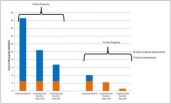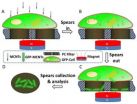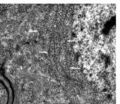Potential new therapy with brain-on-a-chip axonal strain injury model
2014-07-17
(Press-News.org) University of Houston researchers have devised a new method for extracting molecules from live cells without disrupting cell development, work that could provide new avenues for the diagnosis of cancer and other diseases.
The researchers used magnetized carbon nanotubes to extract biomolecules from live cells, allowing them to retrieve molecular information without killing the individual cells. A description of the work appears this week in the Proceedings of the National Academy of Sciences.
Most current methods of identifying intracellular information result in the death of the individual cells, making it impossible to continue to gain information and assess change over time, said Zhifeng Ren, M.D. Anderson Chair professor of physics and principal investigator at the Center for Superconductivity at UH and lead author of the paper. The work was a collaboration between Ren's lab and that of Paul Chu, T.L.L. Temple Chair of Science and founding director of the Texas Center for Superconductivity.
Other key researchers on the project included Xiaoliu Zhang, a cancer researcher with the UH Center for Nuclear Receptors and Cell Signaling, and Dong Cai, assistant professor of physics.
Chu, a co-author of the paper, said the new technique will allow researchers to draw fundamental information from a single cell.
"Now, (most) techniques break up many cells to extract the material inside the cells, so what you get is the average over many cells," he said. "The individual cells may be different, but you cannot see exactly how they function."
The researchers said the steps outlined in the paper offer proof of concept. Ren said the next step "will be more study of the biological and chemical processes of the cell, more analysis."
The initial results hold promise for biomedicine, he said. "This shows how nanoscience and nanoengineering can help the medical field."
Cai said the new method will be helpful for cancer drug screening and carcinogenesis study, as well as for studies that allow researchers to obtain information from single cells, replacing previous sampling methods that average out cellular diversity and obscure the specificity of the biomarker profiles.
In the paper, the researchers explain their rationale for the work – most methods for extracting molecular information result in cell death, and those that do spare the cell carry special challenges, including limited efficiency.
This method is relatively straightforward, requiring the use of magnetized carbon nanotubes as the transporter and a polycarbonate filter as a collector, they report. Cells from a human embryonic kidney cancer cell line were used for the experiment.
The work builds on a 2005 paper published by Ren's group in Nature Methods, which established that magnetized carbon nanotubes can deliver molecular payloads into cells. The current research takes that one step further to move molecules out of cells by magnetically driving them through the cell walls.
The carbon nanotubes were grown with a plasma-enhanced chemical vapor deposition system, with magnetic nickel particles enclosed at the tips. A layer of nickel was also deposited along the surface of individual nanotubes in order to make the nanotubes capable of penetrating a cell wall guided by a magnet.
INFORMATION:
ELSE PRESS RELEASES FROM THIS DATE:
Is the US National Flood Insurance Program affordable?
2014-07-17
There is often tension between setting insurance premiums that reflect risk and dealing with equity/affordability issues. The National Flood Insurance Program (NFIP) in the United States recently moved toward elimination of certain premium discounts, but this raised issues with respect to the affordability of coverage for homeowners in flood-prone areas. Ultimately, Congress reversed course and reinstated discounted rates for certain classes of policyholders.
Carolyn Kousky (Resources for the Future, USA) and Howard Kunreuther's (The Wharton School, University of Pennsylvania, ...
Plasmon-enhanced Polarization-selective filter
2014-07-17
As we all know, some optical devices can only work with a certain incident polarization direction. In this case, a polarizer is necessary to shift the polarization direction of linearly polarized light. A common polarizer is also called half-wave plate, which constructed out of a birefringent material (such as quartz or mica). The behaviour of a half-wave plate depends on the thickness of the crystal, the wavelength of light. Considering the fabrication of crystal, a half-wave plate is difficulty to integrate on circuits. Then what kind of polarizer can be integrated on ...
Do urban casinos increase local crime? Not in this case study
2014-07-17
Philadelphia's SugarHouse Casino opened its doors in September 2010 after years of protests from community members who feared that the casino would lead to an increase in neighborhood crime. However, a new study by researchers at Drexel University and Temple University reveals that these concerns were unfounded.
The study, which used geolocated crime data to examine changes in crime volume in the immediate neighborhood of the casino since its opening, found that crime rates in the Fishtown neighborhood of Philadelphia were largely unaffected by the introduction of the ...
University of Houston researchers create new method to draw molecules from live cells
2014-07-17
University of Houston researchers have devised a new method for extracting molecules from live cells without disrupting cell development, work that could provide new avenues for the diagnosis of cancer and other diseases.
The researchers used magnetized carbon nanotubes to extract biomolecules from live cells, allowing them to retrieve molecular information without killing the individual cells. A description of the work appears this week in the Proceedings of the National Academy of Sciences.
Most current methods of identifying intracellular information result ...
Study: Hour-long home coaching decreases re-admission, costs for Medicare patients
2014-07-17
CLEVELAND -- A new study in Journal of General Internal Medicine reports that an hour-long educational coaching session and two or three follow-up phone calls after a hospital stay reduced re-admission odds by 39 percent among Medicare patients. The study also found that the average cost of care was reduced by $3,700 per patient for those patients who received the education session versus those who did not.
This study is the first to report on a more comprehensive picture of healthcare use in the six months following the patient-centered coaching, called Care Transitions ...
Splice-switching oligonucleotide therapeutics is new method for editing gene transcript
2014-07-17
Splice-Switching Oligonucleotide Therapeutics Is Promising New Method for Editing Gene Transcripts
New Rochelle, NY, July 17, 2014—In splice-switching, an innovative therapeutic approach, targeted oligonucleotide drugs alter the editing of a gene transcript to produce the desired form of a protein. Developments in this rapidly advancing field have already led to promising treatments for such diseases as Duchenne Muscular Dystrophy and spinal muscular atrophy, as described in an article in Human Gene Therapy, a peer-reviewed journal from Mary Ann Liebert, Inc., publishers. ...
Preventing foodborne illness, naturally -- with cinnamon
2014-07-17
PULLMAN, Wash. – Seeking ways to prevent some of the most serious foodborne illnesses caused by pathogenic bacteria, two Washington State University scientists have found promise in an ancient but common cooking spice: cinnamon.
Recent findings published in Food Control journal online suggest Cinnamomum cassia oil can work effectively as a natural antibacterial agent in the food industry. The study results add to a body of knowledge that will help improve food safety and reduce or eliminate cases of food poisoning and related deaths.
In the study, the essential oil ...
Anti-tank missile detector joins the fight against malaria
2014-07-17
State-of-the-art military hardware could soon fight malaria, one of the most deadly diseases on the planet.
Researchers at Monash University and the University of Melbourne have used an anti-tank Javelin missile detector, more commonly used in warfare to detect the enemy, in a new test to rapidly identify malaria parasites in blood.
Scientists say the novel idea, published in the journal Analysis, could set a new gold standard for malaria testing.
The technique is based on Fourier Transform Infrared (FITR) spectroscopy, which provides information on how molecules ...
Acupuncture and moxibustion reduces neuronal edema in Alzheimer's disease rats
2014-07-17
Aberrant Wnt signaling is possibly related to the pathological changes in Alzheimer's disease (AD). Axin and β-catenin protein is closely related to Wnt signaling. Zhou Hua and his team, Hubei University of Chinese Medicine, China confirmed that moxibustion or electroacupuncture, or both, at Baihui (GV20) and Shenshu (BL23) acupoints decreased axin protein expression, increased β-catenin protein expression, and alleviated neuronal cytoplasmic edema. These findings suggest that the mechanism underlying the neuroprotective effect of acupuncture in AD is associated ...
Who are responsible for protecting against neuron and synapse injury in immature rats?
2014-07-17
Fructose-1,6-diphosphate is a metabolic intermediate that promotes cell metabolism. Whether it can alleviate hippocampal neuronal injury caused by febrile convulsion remains unclear. Dr. Jianping Zhou, the Second Affiliated Hospital, Medical College of Xi'an Jiaotong University, China and his team established a repetitive febrile convulsion model in rats aged 21 days, equivalent to 3 years in humans, intraperitoneally administered fructose-1,6-diphosphate at 1,000 mg/kg into the rat model. Results showed that high-dose fructose-1,6-diphosphate reduced mitochondrial ...








